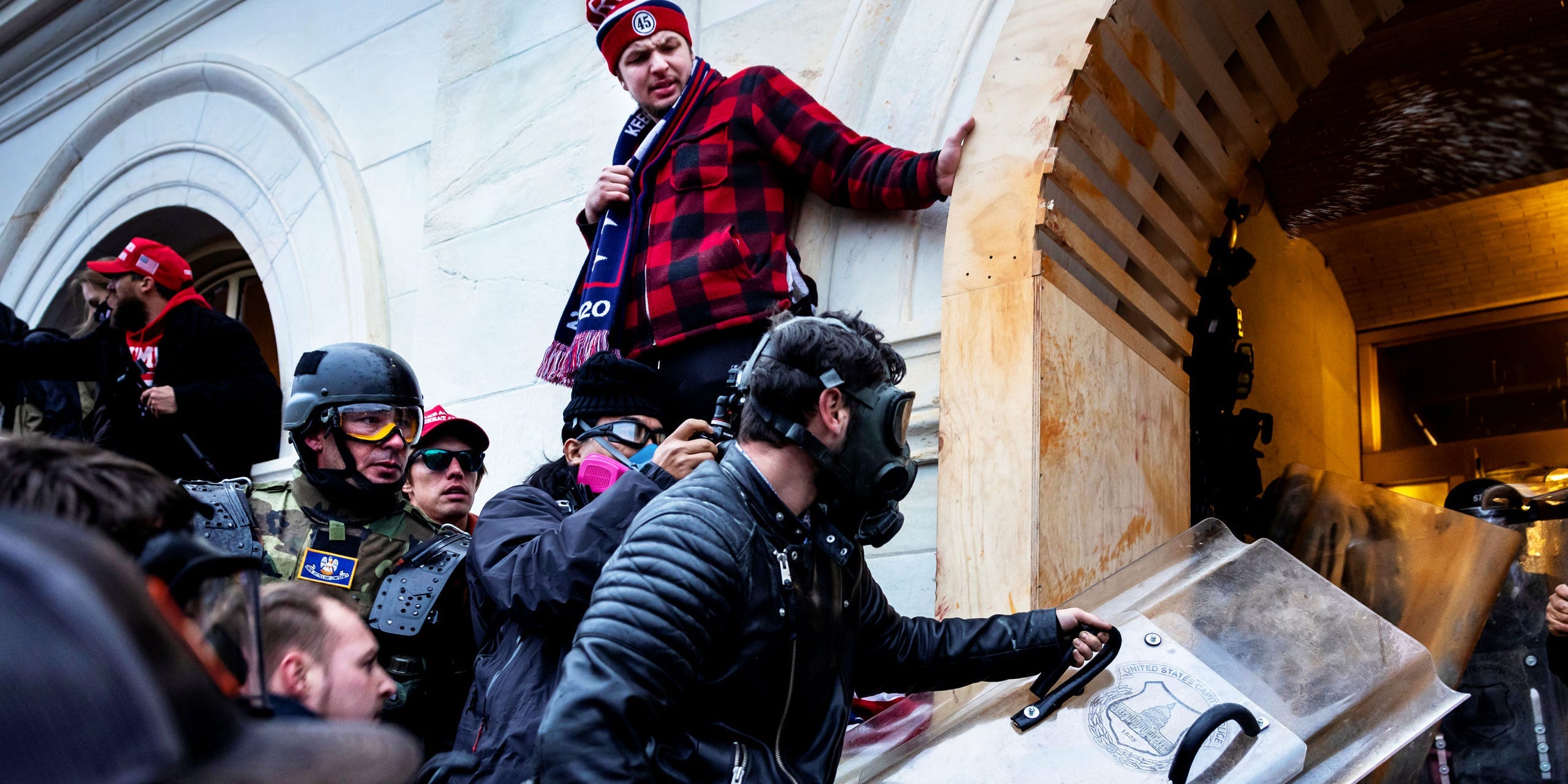
Brent Stirton/Getty Images
- A researcher found that Capitol rioters hailed from towns with dwindling white populations.
- Robert Pape found rioters came from towns with a fear of growing populations of people of color.
- Readers had conflicting feelings on the results of the study, but mostly agreed.
- See more stories on Insider's business page.
A researcher evaluated 377 people arrested so far for alleged involvement in the January 6 Capitol riot and found the vast majority of them hailed from towns with dwindling white populations and a rise in immigrants and people of color.
The findings, published in a Washington Post op-ed and a follow-up report from The New York Times, prompted varying reactions from readers. While many seemed to agree with the conclusions, others said the study didn't highlight how flawed the thinking of these insurrectionists is, and some said it unfairly depicted a small minority as part of a larger trend.
On January 6, supporters of former President Donald Trump breached the US Capitol and clashed with law enforcement. The riot resulted in the deaths of five people, including a police officer. Police have said somewhere between 800 to 1,000 people entered the Capitol during the riot, but three months later, less than 400 have been arrested and charged.
Robert Pape a professor of political science at the University of Chicago and director of the Chicago Project on Security and Threats, said those involved were mostly white and male and hailed from counties that are seeing an increased percentage of non-white people which is causing them to feel as though they are on the brink of losing power.
In many instances, the rioters lived in towns that voted democratic overall. Pape said the issue needed to be looked at as a trend.
"To ignore this movement and its potential would be akin to Trump's response to covid-19: We cannot presume it will blow over. The ingredients exist for future waves of political violence, from lone-wolf attacks to all-out assaults on democracy, surrounding the 2022 midterm elections," Pape wrote.
Pape told the Times he also did an analysis on suicide bombers following the 9/11 terrorist attacks in an effort that helped uncover trends. He said what happened at the Capitol on January 6 should be given the same attention, but it's still just the beginning of the research.
"We really still are at the beginning stages," Pape said.
Some readers said the finding wasn't surprising and confirmed what activists had been saying for a while. They also questioned whether it was fair for white Americans to fear a racial tide or reduced privileges, highlighting ongoing cases of hate crimes and racial violence against minorities.
"Are white people actually concerned about the turning of the tables? That they will be told to go back to where they came from, that they will be attacked on the street, that their loved ones will be choked or shot to death by a police officer? Are they concerned about being stereotyped by employers because their first names are Karen or Brad? Do they think medical doctors will ignore their symptoms and undertreat their pain, because you know how those people are?" one reader wrote in response to the Times article, highlighting the experiences of people of color.
Others, however, said the study may be skewed given that it only looks at data from 377 people arrested in relation to the riots - a sample size too small to make any conclusion about a trend.
"The relatively small pool of data (377 arrests), combined with the skewed nature of those who could attend (the money, time and airport access needed for many of the attendees to take such a trip) doesn't allow for much granular analysis," one reader wrote.
Some said that those who attended do not represent Republicans or a growing trend among former Trump supporters. Pape wrote that there were similarities between the riots and two other Trump rallies which resulted in a small number of arrests but added that the violent turn of events on January 6 could be tied to Trump's incitement.
Trump was impeached in the House over a charge that he incited the insurrection by telling a crowd to "fight like hell." He was later acquitted of those charges by the Senate.
In his, op-ed, Pape wrote that rioters were concerned about the "great replacement" - a theory championed by white supremacists that claims immigrants and people of color will replace white people because immigration is ramping up while white birth rates are low.
"They witness the changes occurring around them every day, and they are so insecure, fearful, and paranoid that they can't conceive of any way to compete in their changing environment except to deny the inevitable changes and irrationally fight to keep things as they used to be - - - the very definition of 'right-wing, ultra-conservative magativity'," a Post reader commented.
Insider has reached out to Pape for comment.
Have a news tip? Contact this reporter at [email protected]
